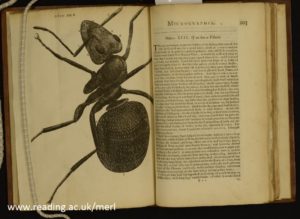
Seventeenth century England underwent sweeping changes in all aspects of human civilization and Robert Hooke (1635 – 1703) helped to provide a catalyst in ushering humanity into the modern scientific era. Among his greatest accomplishments include discovering the building blocks of life and coining the word cell; discovering, along with Robert Boyle, many important aspects of air; being one of the first to observe fossils and provide a reasonably accurate description of how fossils form; and discovering laws of elasticity for which Hooke’s Law is named after him.
Robert Hooke live through a period of remarkable change in England which included the English Civil War which resulted in the trial and execution of Charles I, the Protectorate under Cromwell followed by the restoration of the monarchy, the Great Fire of London, and the Glorious Revolution. With all this social and political upheaval it opened the way for new modes of thoughts and institutions. One important new institution to the progress of science was the Royal Society of London, founded in 1660, of which Hooke has early involvement with and becomes an elected Fellow in 1663.

It was shortly after that time, in 1665, where Hooke released the first major publication by the Royal Society, a book titled Micrographia. In it he revealed his observations as seen through the microscope while littering the pages with illustrations of the microscopic world. His work proceeded to spark a huge interest in microscopy.
Along with his scientific achievements Hook played a key role in rebuilding London after the fire in 1666. His architectural designs earned him significantly more wealth than he earned as a scientist allowing him to die a wealthy man dispute him coming from a modest background.